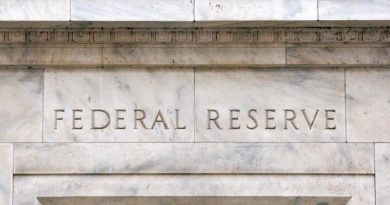Bank Of England Nudges Banks To Start Preparing For Negative Rates
The Bank of England said Thursday it would be appropriate for bankers to start preparing for negative rates even as policymakers refused to give any hint of a such a scenario in the near future.
The nine-member Monetary Policy Committee, headed by Governor Andrew Bailey, unanimously voted to hold the interest rate at 0.10 percent and the quantitative easing at GBP 895 billion in the latest policy meeting.
The MPC said policymakers did not wish to send any signal that they intended to set a negative bank rate at some point in the future.
However, they concluded that it would be appropriate to start preparations to provide the capability to do so if necessary in the future.
Banks would need six months to get ready for negative rates should it be pursued, the BoE said.
The implementation of a negative rate over a shorter timeframe than six months would attract increased operational risk, the central bank cautioned.
The MPC will not increase QE or use negative interest rates in 2021 or 2022, Capital Economics economist Paul Dales said.
ING economists James Smith and Petr Krpata also commented that optimistic growth forecasts suggest that a foray into sub-zero rates is increasingly unlikely in the current cycle.
The cost of borrowing is not the central issue given the wider upheaval caused by Covid-19, and rate cuts also act with quite a lag, they added.
The latest Monetary Policy Report projected GDP to recover rapidly towards pre-Covid levels over 2021, as the vaccination programme is assumed to lead to an easing of the pandemic-related restrictions and people’s health concerns.
GDP is set to reach the end-2019 level by the first quarter of 2022, the bank said.
The UK economic output is expected to fall by around 4 percent in the first quarter of this year, in contrast to expectations of a rise in the November Report.
The bank downgraded its growth forecast for this year to 5 percent from 7.25 percent. The projection for the next year was lifted to 7.25 percent from 6.25 percent.
Headline inflation is forecast to rise quite sharply towards the 2 percent target in the Spring, as the reduction in VAT for certain services comes to an end and given developments in energy prices.
Inflation is projected to be close to 2 percent over the second and third years of the forecast period.
Source: Read Full Article

